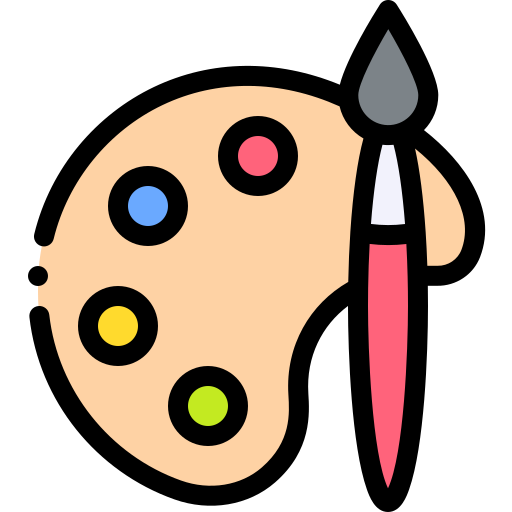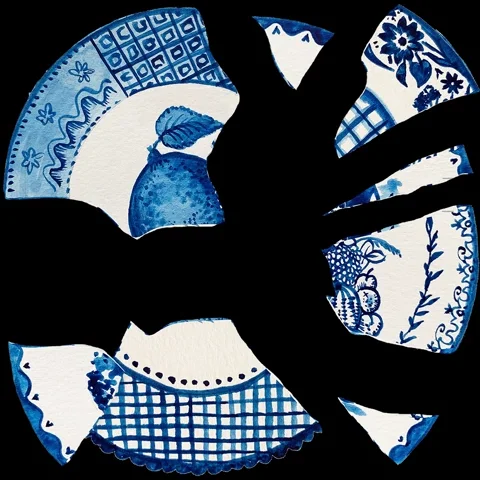
This logo isn't an ad or affiliate link. It's an organization that shares in our mission, and empowered the authors to share their insights in Byte form.
Rumie vets Bytes for compliance with our
Standards.
The organization is responsible for the completeness and reliability of the content.
Learn more
about how Rumie works with partners.
Ever felt like you need to hide your imperfections? Are you frustrated or ashamed of the flaws and cracks in your life story?
In a world that often teaches us to aim for perfection in all that we do, it's common for us to feel ashamed when our stories don't fit this ideal.

The Japanese philosophy of kintsugi offers a refreshing, empowering, and transformative way to reframe how you can look at the parts of your stories that make you go "Eeeeek!"

What is Kintsugi Philosophy?
Kintsugi literally translates to "golden rejoining". It refers to the traditional Japanese art of repairing ceramics with lacquer and gold.
The breakage and cracks are treated as a part of the story of the object, rather than something to hide. These unique repaired items are thought to have more value than before — beautiful in their fragile imperfectness.

Did you know?
The legend around the birth of kintsugi is an interesting one! It's said that a Japanese emperor sent his cracked tea bowl to China to be repaired but was disappointed when it was returned with awkward metal staples. In response, local craftsmen began experimenting with different methods that would be more aesthetically pleasing. This is where Kintsugi emerged as an art of repair.
Kintsugi Philosophy and Personal Development
The field of well-being and psychology looks at the art form of Kintsugi as a metaphor for personal growth. For example, Celine Santini's book Kintsugi: Finding Strength in Imperfection highlights how the Kintsugi philosophy paves the way toward healing.
Just as the cracks in broken crockery are celebrated using golden paint, you can also learn to acknowledge and celebrate the imperfections in your life.

Kintsugi philosophy provides some valuable lessons:
Accept imperfections as a part of your life.
View your story with tenderness, care, and self-compassion.
Notice the strength in your scars and the beauty in your resilience.
See the "cracks" in your story as opportunities for growth.
Manage Mateo's Mindset!

Mateo is interested in adopting kintsugi philosophy to approach his personal development.
Help Mateo decide which of the following mindsets would be helpful for him to embrace imperfections based on kintsugi philosophy.

Mindset 1
The challenging parts of my past are weighing me down. I need to put those thoughts aside and forget they happened.

Mindset 2
I'm shaped by all the events and experiences in my life. I learn from my past and that will take me forward.

Mindset 3
My past may not be perfect, and that's okay. I can gather the strength to rise up when life knocks me down. I can learn to be gentle with myself.

Mindset 4
I can only move forward after I revisit my past and right all wrongs. Only then can I live a perfect life and grow into the person that I want to be.
Quiz
Which of these mindsets allows Mateo to embrace imperfections through the Kintsugi philosophy? Select all that apply:
Mateo can embrace kintsugi philosophy by accepting that his imperfect past is a part of his story. He can see the strength in his ability to move forward.
How to "Kintsugi It"
Adopting kintsugi philosophy on your path to self-development can allow you to reframe your life's imperfections in an empowering way. In other words, you can learn how to "kintsugi it"!

 Seek Support
Seek Support
Prioritize your safety and social support.
Approach trusted friends and family to talk.
Seek advice from a mental health professional, counselor, or coach.
 Journaling
Journaling
Actively rewrite the challenging parts of your story.
This aligns with the re-storying method in narrative practices and therapy.
 Creative Expression
Creative Expression
Take inspiration from methods of expressive arts therapy and embrace your imperfections through drawing, music, art, or singing.
You may even want to create your own interpretation of a kintsugi masterpiece, using tools and mediums of your choice.
Quiz
Galeela is using kintsugi philosophy to process some challenging past events that she's making peace with in her life's story. Select all possible ways she can do this:
Galeela would benefit from adding her unique interpretation to the kintsugi art form through expressive poetry writing on a collage of broken pottery. She may also benefit from finding a support group to process any grief that she may be feeling.
Take Action

Armed with the knowledge you've gathered, it's time to kintsugi it!
This Byte has been authored by
Anchal Sood
Learning Designer & Instructional Specialist
M.Ed